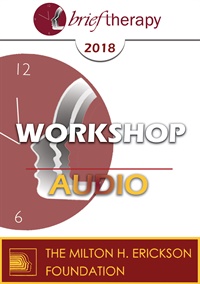BT18 Workshop 16 - Healing Traumatic Wounds Using a Brief Therapy Model - Janina Fisher, PhD
- Average Rating:
- Not yet rated
- Topic Areas:
- Workshops | Brief Therapy | Trauma | Pain and Healing
- Categories:
- Brief Therapy Conference | Brief Therapy Conference 2018 | Pioneers in Couples and Family Therapy
- Faculty:
- Janina Fisher, PhD
- Duration:
- 2:05:52
- Format:
- Audio Only
- Original Program Date:
- Dec 07, 2018
- License:
- Never Expires.
Description
Description: Janina Fisher presents a brief therapy model for trauma treatment, emphasizing the limitations of traditional talk therapy and the need for approaches suited to managed care. She explains how trauma is stored in implicit memory and reviews Bessel van der Kolk’s brain research. Fisher outlines a phase-oriented approach, incorporating psychoeducation, mindfulness, and right-brain-to-right-brain communication. She discusses neurofeedback’s effectiveness, sensory motor psychotherapy’s role in skill development, and strategies for stabilizing clients in unsafe situations.
Syllabus Description: Traditional models of trauma treatment emphasize a narrative approach centered on the overwhelming events, a very long, slow, painful approach in which clients get worse before they get better. But rather than ‘treat’ the events, neuroscience teaches us how to treat their effects. When trauma symptoms are “decoded” as evidence of how individuals survived, they become comprehensible and treatable. Clients are recruited as active participants in the treatment, are educated to understand trauma-related responses, reassuring them that they are not inadequate or crazy. Best of all, a brief therapy model can be inherently relational while avoiding the 'side effects' of long-term therapeutic relationships.
Educational Objectives:
- Define the 'living legacy' of trauma.
- Describe the stages of brief therapy for trauma.
- Identify three somatic interventions for treating post-traumatic.
*Sessions may be edited for content and to preserve confidentiality*
Credits
Handouts
| Timestamped Transcript (1 MB) | 25 Pages | Available after Purchase |
| Ericksonian Learning Snapshot (244.5 KB) | 2 Pages | Available after Purchase |
Faculty

Janina Fisher, PhD Related Seminars and Products
Janina Fisher, PhD is a licensed Clinical Psychologist and Instructor at the Trauma Center, an outpatient clinic and research center founded by Bessel van der Kolk. Known for her expertise as both a therapist and consultant, she is also past president of the New England Society for the Treatment of Trauma and Dissociation, an EMDR International Association Credit Provider, a faculty member of the Sensorimotor Psychotherapy Institute, and a former Instructor, Harvard Medical School. Dr. Fisher has been an invited speaker at the Cape Cod Institute, Harvard Medical School Conference Series, the EMDR International Association Annual Conference, University of Wisconsin, University of Westminster in London, the Psychotraumatology Institute of Europe, and the Esalen Institute. Dr. Fisher lectures and teaches nationally and internationally on topics related to the integration of research and treatment and how to introduce these newer trauma treatment paradigms in traditional therapeutic approaches.


